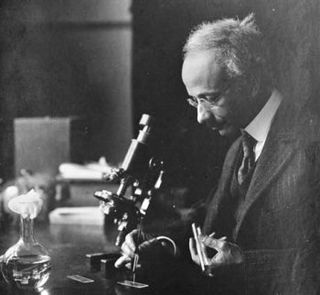
Deep within Countway Library at Harvard Medical School is a trove of old documents, rich in insights about the history of medicine. Within that great treasure are a few boxes of the papers of Solomon Carter Fuller. And who is that? You might well ask. Fuller was born in Africa in 1872, the grandson of slaves who gained their freedom and moved to Liberia. Fuller came to the US as a teenager, became a physician, a pathologist, a psychiatrist, and an outstanding, though largely forgotten, researcher in dementia.

Holding Fuller's hand-written notes in my hands made him feel present in the room. His papers, dating back to the early years of the twentieth century, were sepia colored and faded, but still quite legible. One batch contained reports of various autopsies. A thirteen-year-old boy died after inhaling Somnoform, an early and quite dangerous anesthetic. A nineteen-year-old woman succumbed to a bullet wound to the left temple. Fuller traced the damage to the bodies of these long gone young people, quietly recording exactly what had happened, if not why.
I came across Fuller while studying the history of dementia research. I learned that after completing medical school in the US, Fuller sought to deepen his training by pursuing two years of study in the prestigious German lab of Alois Alzheimer. Returning to the US in 1905, Fuller continued to study both brain pathology and medical symptoms, always seeking to connect one with the other. His scientifically impeccable work includes some of the earliest publications on dementia in America, or anywhere. Particularly striking is his finding from 1911 that amyloid, the pathological plaque that today defines Alzheimer's disease, is neither necessary nor sufficient for dementia of the Alzheimer's type. It's hard to convey how important this conclusion is, how thoroughly it was ignored, and how hard it has been, even more than a hundred years later, to arrive again at this point.
It’s impossible to capture 100 years of medical history here, but I'll offer a few highlights. The work of Fuller, Alzheimer, and others was largely forgotten for decades. Various factors, including the survival of more older people with more cases of dementia, the expense of caring for them, and the creation of new scientific methods for studying the brain led to renewed interest in dementia research, beginning in the 1970s and increasing ever since. With that renewed attention, the work of Alzheimer gleamed like gold from the past. He connected brain lesions with clinical symptoms, citing those lesions as the cause of upsetting manifestations of dementia. An exceptionally large percentage of the research of the past decades has been on amyloid, revealing many secrets about where it comes from and what it does. Unfortunately, the larger secret of how to prevent or cure Alzheimer's has not emerged. Countless large research studies have attempted to decrease dementia symptoms by decreasing amyloid. They have failed. Though there remains much dissent and diversity of opinion, an emerging view is that amyloid is not the whole story. It's not good for you -- true. If there is a lot of amyloid in your brain you are more likely to develop dementia. But there are flies in the ointment of the amyloid hypothesis. Most importantly, there are older people with lots of amyloid and no symptoms of dementia, just as Solomon Carter Fuller pointed out a century ago. Interestingly, there are also people with symptoms of what appears to be Alzheimer's dementia who turn out, since we can now study the brain in living people, not to have any excess amyloid. In short, as Fuller argued, excess amyloid is neither necessary nor sufficient for dementia. Why are some people with amyloid protected? Do they have helpful genes, healthy lifestyles or other factors that create resilience? What is causing dementia similar to Alzheimer's in some people without excess amyloid? Are we missing tiny strokes or other injuries? These are questions that excellent researchers are working on today. If we had paid more attention to Fuller's work way back when, maybe we'd be further ahead.
Why didn't we do that? Why didn't Fuller receive the attention he might have, including with the resurgence of dementia research? Racism is a big part of the story -- no question about that. Fuller's published work is exceptional. Its complexity, thoroughness and scrupulous honesty put it head and shoulders above most other published work of the time. Fuller was appreciated by a small group in his time, but it's hard to believe this level of scholarship, produced by a scholar of a different race, would not have gained him far greater stature. But there's more at play here. His ideas bucked the conventional wisdom in his time and continued to do so when dementia research started its comeback in the 1970s. Few scholars choose to celebrate a visionary who considered their idea generations ago and found it wanting. As our understanding of dementia pathology grows and gains complexity, it's time to take another look at this careful scientist, this serious and honest scholar. I would build him a statue or make a holiday of his birthday (August 11) if I could. Meanwhile, I am just glad to celebrate him and hope you will be, too.

